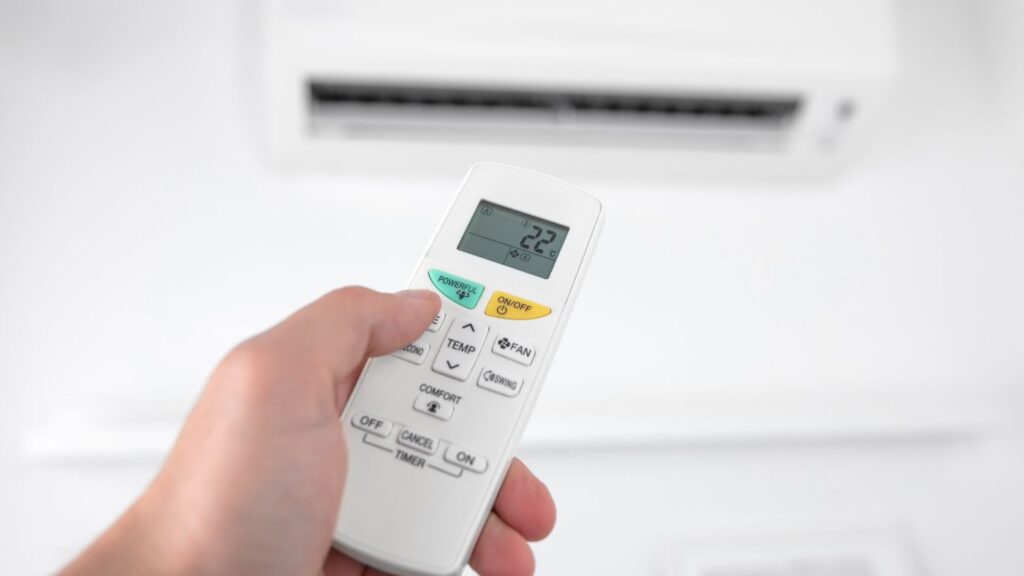Thermal shock refers to the body’s physiological response to abrupt changes in temperature, a phenomenon many experience when stepping from the sweltering heat of summer into a briskly air-conditioned space. This sudden shift forces the body to rapidly adjust its internal temperature management, a challenge to our natural thermoregulatory processes that strive to maintain a stable core temperature. Understanding how these sharp temperature gradients impact our health is crucial, as repeated exposure can strain our system, potentially leading to various discomforts and health issues. By exploring the effects of thermal shock, we can better appreciate the importance of maintaining more consistent environmental temperatures to support our body’s inherent abilities to regulate heat and cold effectively.
Thermal Shock: Effects of Air Conditioning on Our Body’s Thermoregulation
What is Thermoregulation?
Thermoregulation is the body’s essential process of maintaining its core internal temperature within a narrow, optimal range, despite external temperature fluctuations. This regulation is crucial for ensuring the proper functioning of metabolic processes and maintaining enzymatic activities at efficient levels. The body employs several mechanisms to manage heat gain and loss. Vasodilation, the widening of blood vessels, increases blood flow to the skin, allowing more heat to escape when it’s hot. Conversely, vasoconstriction, the narrowing of blood vessels, reduces blood flow to the skin to retain heat when it’s cold. Maintaining a stable internal temperature is vital because significant deviations can disrupt bodily functions and lead to health problems such as hypothermia or heatstroke, affecting the heart, brain, and other organs. This balance is therefore critical to sustaining life and allowing the body to operate efficiently.
How Air Conditioning Affects Thermoregulation
Air conditioning systems are designed to create indoor environments that are significantly cooler than the outdoor temperature, especially during the peak of summer heat. This drastic difference in temperatures can lead to what is known as “thermal shock” when individuals move between these contrasting environments. The body, which naturally tries to maintain a constant internal temperature, must suddenly adapt to these cold conditions. When it does so, mechanisms like vasoconstriction activate to reduce heat loss by minimizing blood flow to the skin.
However, when re-exposed to the warm outdoor environment, the body may overcompensate as it switches back to vasodilation, where blood vessels widen to increase blood flow and dissipate heat. This rapid flip-flopping between cooling and heating can stress the body’s thermoregulatory system. The additional energy required to continually adjust internal temperatures can affect the metabolic rate, potentially slowing it down during prolonged exposure to cold as the body tries to conserve energy.
This physiological stress not only impacts metabolic health but can also strain the cardiovascular system and exacerbate chronic conditions, such as respiratory ailments, by stressing the body’s homeostatic mechanisms. Therefore, understanding and managing these temperature transitions is crucial to minimizing health risks associated with air conditioning exposure.
Health Impacts of Thermal Shock

Immune System:
Drastic temperature changes, such as moving from a hot to a heavily air-conditioned environment, can stress the body’s immune system. This stress compromises its effectiveness, potentially lowering resistance to pathogens and increasing susceptibility to infections. The shock from sudden cooling can lead to a temporary downturn in immune response, making the body less adept at fighting off germs and viruses.
Muscular Function:
Rapid cooling can affect muscular function significantly. Exposure to cold temperatures causes muscles to contract, leading to stiffness and reduced flexibility. This reaction not only causes discomfort but can also exacerbate conditions such as arthritis. The cold environment can make joint pain more pronounced and movement more difficult, as muscles are less efficient under lower temperatures.
Cardiovascular Health:
The cardiovascular system is also impacted by sudden temperature changes. When the body undergoes thermal shock, the heart must work harder to pump blood through constricted vessels, increasing the workload on the heart and causing fluctuations in blood pressure. This can put strain on the cardiovascular system, particularly in individuals with pre-existing heart conditions, posing risks such as heightened blood pressure and even triggering cardiovascular events.
Preventing and Mitigating the Effects of Thermal Shock
Acclimatization Tips:
To reduce the risk of thermal shock, gradually acclimatize to different temperatures. Start by setting the air conditioning only a few degrees cooler than the outside temperature and slowly decrease it over several days. This helps your body adjust more smoothly to the temperature differences without overwhelming its thermoregulatory system.
Thermostat Settings:
To minimize thermal shock, it is advisable to keep the indoor temperature not more than 8-10 degrees cooler than the outdoor temperature. Setting the thermostat to a moderate temperature reduces the severity of temperature transitions and helps maintain a comfortable yet energy-efficient environment. This setting also lessens the workload on the air conditioning system, extending its lifespan and reducing energy consumption.

Clothing Recommendations:
Wear layers that can be easily adjusted or removed as needed when moving between different thermal environments. Lightweight, breathable fabrics work well for the outdoors, while a light sweater or jacket can be added indoors. This strategy allows for quick adaptation to varying temperatures, providing comfort without overburdening the body’s heat regulation capabilities.
Hydration and Diet:
Maintaining hydration is crucial, as the body loses water through sweat when it tries to cool down. Drink plenty of fluids throughout the day, and include hydrating foods like fruits and vegetables in your diet. A balanced intake of minerals, especially electrolytes, supports the body’s heat regulatory functions. Foods rich in potassium, magnesium, and calcium can help maintain electrolyte balance and aid in proper thermoregulation, ensuring the body operates optimally despite temperature changes.
Conclusion
Understanding the effects of thermal shock caused by air conditioning on our body’s thermoregulation is crucial for maintaining optimal health during the summer season. By carefully managing indoor temperatures, wearing appropriate clothing, staying hydrated, and gradually acclimatizing to temperature differences, we can minimize the stress on our bodies. These simple yet effective strategies not only enhance comfort but also protect our immune, muscular, and cardiovascular systems from the adverse effects of drastic temperature changes. Let’s adopt these practices to ensure a healthier, more comfortable summer, free from the disruptions of thermal shock.
Also read: Air Quality and Mental Health: The Purifying Role of Indoor Plants
